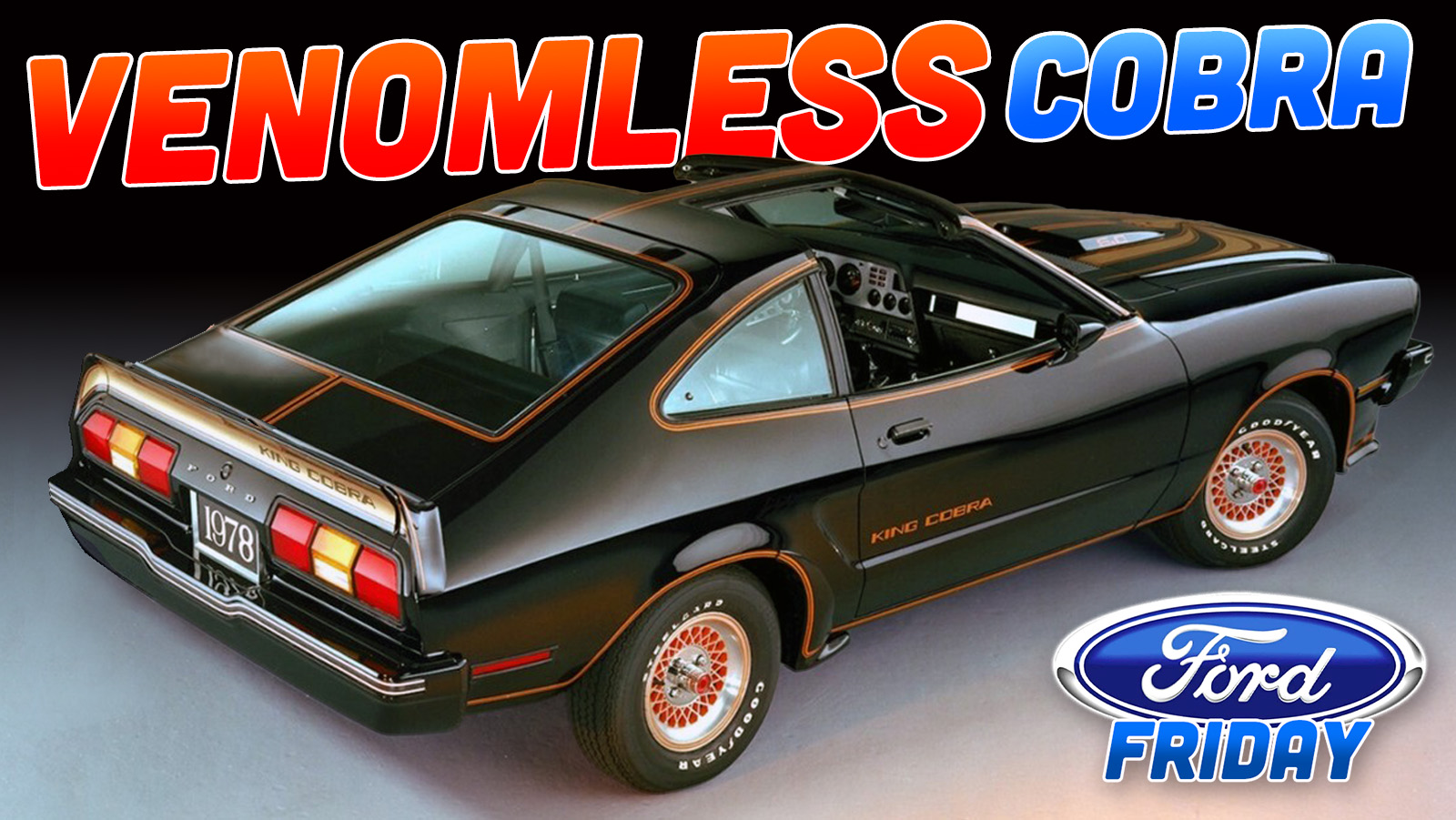The Ford Festiva is one of Ford’s greatest cars of the 1980s. That’s a huge claim, but the Festiva lives up to it in being so refreshingly simple, economical, and shockingly practical. These cars were so honest in doing exactly as they said on the tin while being as cute as buttons. But there was an even cuter version of the Ford Festiva that America wasn’t cool enough to get. This is the Ford Festiva GT-A, and it’s a fiberglass-faced Festiva with the cute cranked up to 11 and sold only in Japan.
When the Ford Festiva was new, it was one of the cheapest cars that your hard-earned dollar could buy in America. These little guys were carbureted economy cars whose sole purpose was to get you from one point to another. What’s glorious about the Festiva is that it never tried to be something that it wasn’t. It didn’t promise to rock your world or disrupt anything. It was transportation in almost its purest form.
The Festiva was sort of disposable in its day. It was a car that you bought, put 300,000 miles on, and then discarded. However, there is a movement of enthusiasts today who not just appreciate cars like these, but champion them. Everyone dreams about the legends of their favorite automotive era, but cars like the Festiva is how most people got around. Today’s world is full of touchscreens, capacitive buttons, and air vents you can’t even adjust with your hands. The Ford Festiva doesn’t have any of that; you were lucky if you even got a passenger-side mirror. It’s a refreshing antidote to today’s era of connected everything.

As such, you probably won’t be surprised to learn there’s a thriving community of people keeping the Festiva alive, decades after it ceased production. The few clean Festivas left are cherished as much as any million-dollar supercar. One of the holy grails of the Ford Festiva is this, the GT-A. This version of the Festiva, which was never sold in America, was modified by a German firm as a nod to classic Italian racecars. Just 300 of them were built, and yes, a lot of them have white noses on red bodies.
We were tipped off to the fact that owning one of these in America is possible by Ford’s Ryan McManus, who posted about one of these gems on LinkedIn.

Three Economical Siblings
As Old Motors reports, when Ford wanted to sell a car to compete with the cheap imports that flooded America in the 1980s, it turned to its partner at Mazda. As was tradition at that point, Mazda was the creator of several of Ford’s international models. At home, the Ford-Mazda relationship was best represented by the Courier truck.
The two brands had partnered up with each other since 1969, when Ford, Mazda, and Nissan formed the Japanese Automatic Transmission Company, more commonly known as JATCO. Ford would score a 7 percent stake in Mazda in 1974, increasing that to 24.5 percent by 1979. So, when Ford reportedly called upon Mazda to design a new subcompact in 1981, Mazda was already deeply embedded in the Ford ecosystem.

The new car wasn’t going to be a single model. As Old Motors notes, Ford and General Motors were also exploring using South Korea as a base of manufacturing. GM partnered up with Daewoo while Ford befriended Kia. Each of the now three members involved in the project had something to gain. Ford would have a car to fight the Chevrolet Sprint, Hyundai Excel, the Subaru Justy, and the Yugo. Mazda would get some much-needed action for its post-1970s recovery. Kia would get a cheap subcompact to sell in its home market, too, while also building cars to be shipped to America.
The resulting vehicles were the Ford Festiva, Mazda 121, and Kia Pride. Mazda handled the engineering, Kia built the car, and Ford slapped its badge and marketing on it. The Festiva platform was also a truly global vehicle, spreading its wings throughout Asia and even landing in Australia. Production began in 1986 and, amazingly, there are modern versions of these cars. Iran’s Saipa built several different versions of the first-generation Kia Pride until 2020 before passing the design on to Wallyscar of Tunisia.

David Tracy once wrote about how great the Festiva was:
“Festiva is dedicated to the proposition that all small cars aren’t created equal,” begins the 1988 Festiva’s brochure. (Yes, Ford quoted the Gettysburg Address in an ad). The brochure goes on to talk about “unmistakable Ford styling,” and a “solid, wide stance” that gives it stability. But above all, the car’s hallmark is: “interior space efficiency.” And actually, if you ask Festiva owners, they’ll tell you they agree. The car is tiny on the outside, not that small on the inside. It’s a little front-wheel drive machine designed by Mazda and built by Kia, who exported it to the U.S., where it was sold for only $5,490. That’s about $15,000 in today’s weaker dollars. That’s legitimately cheap!
“Comfort is very much part of the formula. So is fun. Festiva’s power front disc brakes, agile suspension, 1.3-liter overhead-cam 4-cylinder engine and manual overdrive transaxle make it a lot of fun to drive.,” the brochure continues. “Festiva also provides the small-car benefits that are expected. EPA estimated fuel economy for the LX model is an impressive 39 mpg City for around-town efficiency. 43 mpg highway,” it reads, before discussing just how maneuverable this little one-box Ford is.

All of this is true. The Festiva is elite in the areas of maneuverability, fuel economy, and space utilization. The entire drivetrain is under the short front hood. Everything aft of the front axle is interior space, and there’s plenty of it, even if that seems impossible given that the car is 16.5 inches shorter than my little BMW i3.
I owned a 1991 Ford Festiva for a little over a month. It was a total rustbucket, with its rear suspension mounts rotting out and a gas tank peppered with more rust holes, but it functioned as an epic off-road and sort of street-legal go-kart.
Better In Japan

Over in Japan, this car was an interesting oddity. While it was sold as the Mazda 121 in some markets, it was sold in Japan as the Ford Festiva and distributed through Autorama, Ford’s and Mazda’s special channel for Ford products in Japan.
The Japanese version of the Ford Festiva was a real treat. There was a version with a canvas roof, a version with a sliding sunroof, and even a sporty model with adjustable shocks. The Festiva became popular in Japan, particularly with women, and the car found itself in Japanese films and even music.

In Japan, a base Ford Festiva L had a 1.1-liter Mazda B1 four-cylinder that was good for 52 HP. The bigger engine was a 1.3-liter B3 that made 64 HP. That’s not a lot of power, but remember that the original Festiva only weighed around 1,700 pounds, depending on variant and options. While it wasn’t exactly a pocket rocket, the Festiva was plenty fun to hoon. It’s no surprise to see that Festivas ended up in motorsport and got tuned, too.
The hot versions of the Festiva in Japan were the GT and the GT-X, which got a DOHC 1.3-liter Mazda BJ four, which revved up to 7,500 RPM and made 88 HP.
The Weirdest Festiva
As Japanese online car magazine Motor Fan writes, Hideyuki Nakajima was an enthusiast within Autorama, and he came up with an idea for a special edition Festiva. What if the Festiva was made to look like a grassroots Italian racing car from the 1960s? Japan’s car and motorcycle enthusiasts were obsessed with racing in the 1980s and the 1990s, so Nakajima’s idea wasn’t that crazy.

To achieve the Italian look, Autorama took the highest production Festiva in Japan, the GT-X, and handed it off to German company Scala Design to implement the changes. Scala’s biggest change was up front, where the nose of the Festiva was cut off and replaced with fiberglass that emulated a ’60s racer. The rear end also saw notable changes to the tailgate and rear bumper for a more racy appearance.

Autorama planned a production run of just 300 vehicles. However, according to Motor Fan, the modifications meant that there was a six-month wait. The publication goes on to claim that, thanks to the wait, some of those waiting decided to drop out of line, leading to only about 200 examples being built at first. Allegedly, Autorama’s response was to offer a version in solid red or solid black to appeal to more people. But most of the GT-As are bright red with a white nose, just like the racers of the past. If you lived in Japan, the starting price was 1,626,000 yen (¥1,910,588 in 2025), and air-conditioning was optional.

Under the bodywork of a GT-A sits a GT-X. That means the hotter 88 HP engine, a five-speed manual, a MOMO steering wheel and shift knob, stiffer stabilizer bars, adjustable dampers, a sport suspension, and sport seats. While this is not the absolute hottest Festiva – a distinction that goes to the Shogun – it’s one of the coolest. The GT-A also weighed about 1,763 pounds, so it was still light. So far as I’ve been able to tell from Japanese sources, the GT-A sold from March 1991 to December 1992, or the very end of Festiva production for Japan.

The fact that just 300 of them were built makes them rare by themselves, but it’s also been over 30 years since the last example was built. There’s no way of knowing how many are left. What I can tell you is that the Festiva GT-A is so rare that there are no auction statistics for it, and I’ve found only one for sale.
Before you start salivating, I will note that the only GT-A currently for sale on an export site is listed for $9,790, and that’s before the price of shipping and before you get slapped by the tariff situation. You’re looking at around $15,000 or so before all is said and done. That’s a whole heaping of cash for a quick and quirky Ford Festiva. Sadly, this one is also one of those single-color models, so it’s not as weird as it could be.

Still, you’d be the only person at your local car meet with this kind of Ford Festiva. It also helps that this example has just 44,889 kilometers (27,892 miles) and was assessed with a condition grade of 4 the last time it went through the auction system. So it does seem to be a solid example. The other good news is that since this is bigger and more powerful than a Kei car, a lot of the states that ban Kei cars won’t care about this.
The Ford Festiva came from a different time. Tiny, lightweight, and economical cars were in, and they were cheap. These cars didn’t have many features, but they were a blast to drive. The Festiva GT-A is one of the ultimate representatives of this era, and the GT-A seems to embrace the mantra of “slow car fast.” If you’re looking for something a little bit different to import from Japan, perhaps your next buy should be a Ford.









I have seen several Festivas driving around my area over the years. Been a minute though.
This just makes me want to try and find a Mazda 121 now though. Especially with that retractable roof. Slick little car